Pasadena, TX Pollen and Allergy Report for Summer 2023
Pollen Allergy Trends in Pasadena, TX
When is pollen lowest in Pasadena, TX?

February
Lowest month total PPM
Avg. PPM
When is pollen highest in Pasadena, TX?

March
Highest month total PPM
Avg. PPM
How does pollen in Pasadena, TX compare to Texas?
Pasadena has a higher average PPM than the state of Texas.
Pasadena yearly avg PPM:
Texas yearly avg PPM:
How does pollen in Pasadena, TX compare to the USA?
Pasadena has a higher average PPM than the USA.
Pasadena yearly avg PPM:
USA yearly avg PPM:
Is pollen worse this year in Pasadena, TX?
Spring 2023 was worse than spring 2022.
Spring 2023 PPM:
Spring 2022 PPM:
Average PPM in Pasadena, TX
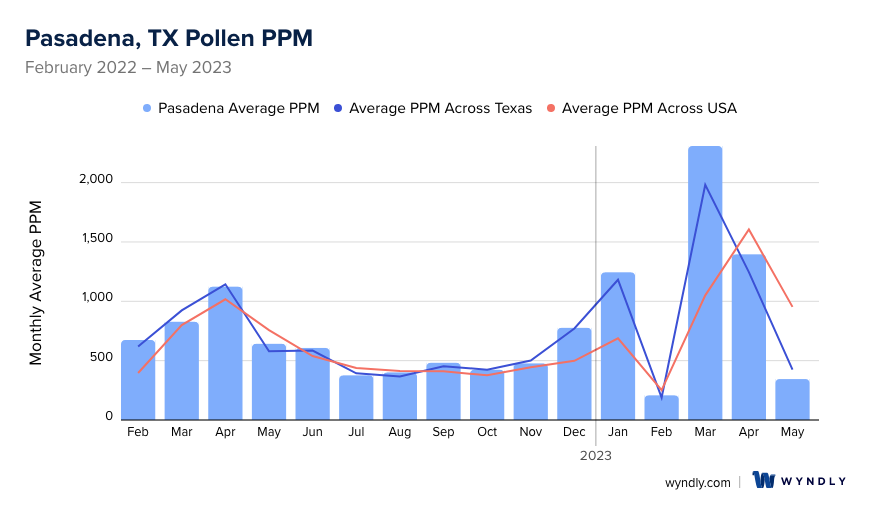
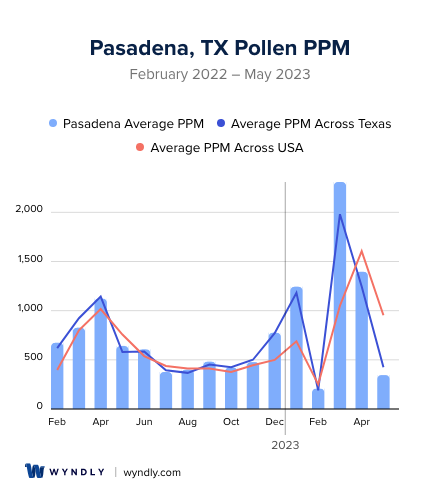
Pasadena, TX Pollen and Allergy Breakdown by Month
Grass
When is grass pollen highest in Pasadena, TX?
February has the highest grass pollen in Pasadena, TX with an average PPM of
When is grass pollen lowest in Pasadena, TX?
December has the lowest grass pollen in Pasadena, TX with an average PPM of
Tree
When is tree pollen highest in Pasadena, TX?
March has the highest tree pollen in Pasadena, TX with an average PPM of
When is tree pollen lowest in Pasadena, TX?
July has the lowest tree pollen in Pasadena, TX with an average PPM of
Weed
When is weed pollen highest in Pasadena, TX?
December has the highest weed pollen in Pasadena, TX with an average PPM of
When is weed pollen lowest in Pasadena, TX?
February has the lowest weed pollen in Pasadena, TX with an average PPM of
Pasadena, TX Pollen Monthly Breakdown by Pollen Type


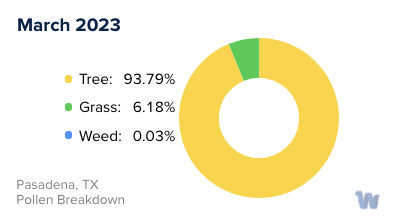
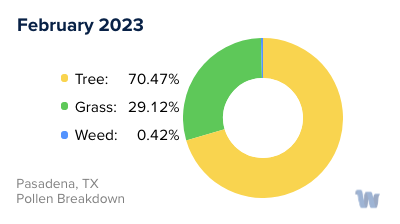

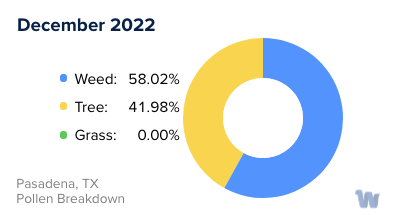

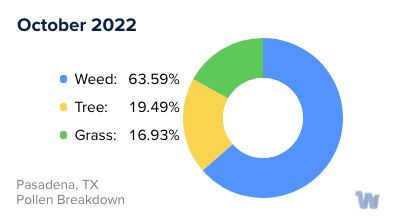
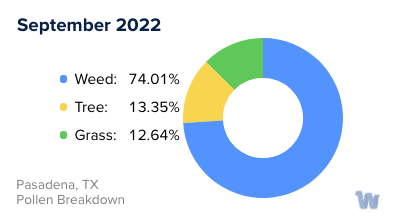

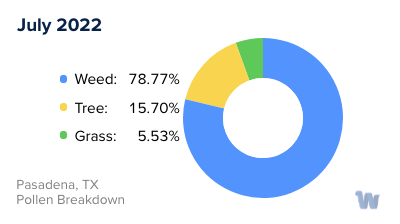
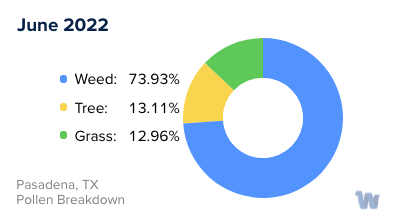
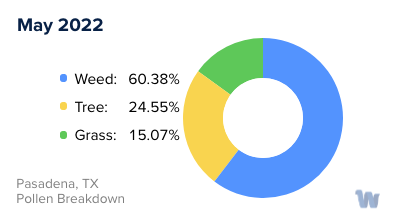
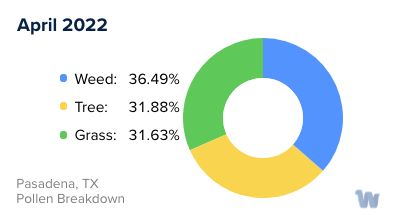

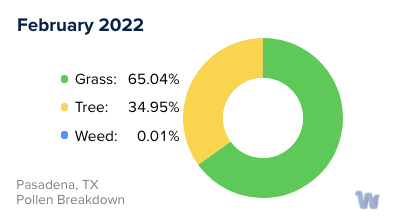
Pollen and Hay Fever in Pasadena, TX
Pollen allergies, often referred to as "hay fever," are a common issue for many residents in Pasadena, Texas. This condition can be triggered by various types of pollen, each linked to specific seasons and types of plants.
Springtime in Pasadena is often associated with tree pollen allergies. Oak, pine, and cedar are among the local trees that release large amounts of pollen into the air. When these microscopic particles enter the nose of someone who's allergic, the immune system can overreact, causing symptoms such as sneezing, runny nose, and itchy, watery eyes.
As the seasons transition into the hot Texas summer, grass pollen becomes more prevalent. The warm weather conditions encourage the growth of grasses such as Bermuda grass, Timothy grass, and ryegrass. These grasses release their pollen, which can travel on the warm breezes, leading to a spike in hay fever symptoms among sensitive individuals.
Finally, as the summer heat gives way to cooler autumn temperatures, weed pollen begins to take center stage. Plants like ragweed, sagebrush, and lamb's quarters are common culprits during this time. Even though these plants may not be present in every Pasadena backyard, their pollen can travel hundreds of miles on the wind, affecting individuals far from the source.
In Pasadena, the seasons bring beauty, change, and unfortunately for some, allergies. The diverse flora of the region contributes to a continuous pollen season, with different plants taking their turn to flower and release pollen. Understanding the types of pollen and their respective seasons can help individuals anticipate and manage their symptoms better. It's important to note that while this information provides a general guide, actual pollen levels can vary year by year, and day by day, influenced by factors such as temperature, rainfall, and wind.
Living in Pasadena means embracing the rhythm of nature, pollen and all. And while pollen allergies can be a nuisance, they're also a testament to the rich and varied plant life that makes the city so vibrant and unique.


